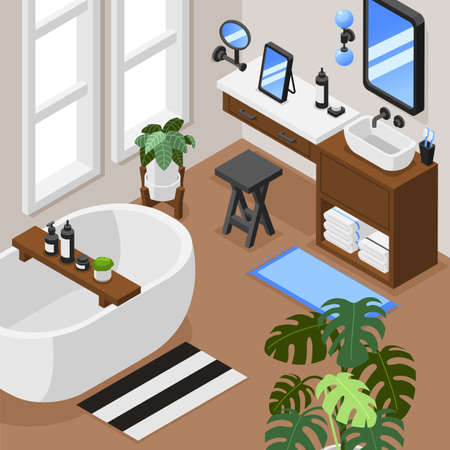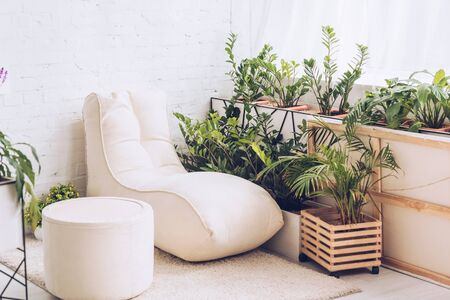Defining Your Outdoor Room
When it comes to designing outdoor spaces that function like indoor rooms, the first step is understanding how to define your “outdoor room.” This goes beyond simply placing furniture on your patio or deck—it’s about intentionally assessing your backyard and creating distinct zones that mirror the boundaries you’d find inside your home. Start by walking through your outdoor area and taking note of its size, shape, and natural features. Consider how sunlight, shade, privacy, and views might influence where each zone belongs. Think of your outdoor space as a blank canvas where you can establish purposeful areas for lounging, dining, cooking, or even working. Use physical boundaries such as planters, outdoor rugs, pergolas, or hedges to carve out different sections. These boundaries help visually and functionally separate each “room,” just like walls do indoors. By thoughtfully defining these spaces, you’ll set the stage for an outdoor environment that feels organized, comfortable, and inviting—making it just as functional as any room inside your house.
2. Choosing All-Weather Furniture and Materials
One of the most important steps in designing outdoor spaces that function like indoor rooms is selecting furniture and materials that can handle the elements while still looking great and feeling comfortable. American homeowners often seek out pieces that echo the style, durability, and coziness of their favorite indoor furnishings, but with the added resilience needed for year-round use outside. Below is a breakdown of some of the most popular outdoor materials and furnishings in the U.S., highlighting their key features:
| Material/Furnishing | Style | Durability | Comfort |
|---|---|---|---|
| All-Weather Wicker | Classic, Cozy, Versatile | Resists fading, cracking, & moisture | Cushions add plush comfort, similar to indoor sofas |
| Teak Wood | Natural, Elegant, Timeless | Naturally weather-resistant, ages beautifully | Smooth surface; often paired with thick cushions |
| Powder-Coated Aluminum | Modern, Sleek, Lightweight | No rusting or warping; easy to move around | Often includes ergonomic designs for support |
| Sunbrella® Fabrics | Wide range of colors & patterns | Mold, mildew & UV resistant; easy to clean | Soft texture feels like indoor upholstery |
| Polywood/Recycled Plastic Lumber | Eco-friendly, Simple lines, Variety of colors | Withstands extreme weather; low maintenance | Smooth feel; shaped for comfort without splinters |
| Outdoor Sectionals & Lounge Sets | Mirrors indoor living room sets; modular options available | Built with all-weather frames & quick-dry cushions | Deep seating and plush cushions create a living room feel outdoors |
| Ceramic or Stone Tabletops | Sophisticated, Durable surfaces for dining/coffee tables | Stands up to rain, sun, and temperature changes without damage or staining | Smooth finish; easy to clean for entertaining guests outside just like indoors |
By choosing these all-weather options, you can design an outdoor space that doesnt just look inviting but also stands up to everyday use—mirroring the comfort and functionality of your favorite rooms inside your home.

3. Incorporating Lighting and Climate Control
One of the key elements in designing outdoor spaces that function like indoor rooms is ensuring comfort and usability at all times of day—and in every season. Integrating both functional and decorative lighting solutions creates a welcoming atmosphere while also providing essential illumination for nighttime activities. Consider layering different types of lighting: overhead string lights or lanterns add ambiance, while path lights, step lights, and sconces enhance safety and visibility. For a truly cozy feel, install dimmers or smart controls to easily adjust brightness according to your mood or activity.
Climate control is equally important for maximizing your time outdoors. Shaded structures such as pergolas, retractable awnings, or umbrellas offer relief from the midday sun and help define distinct zones within your outdoor space. When temperatures drop, features like fire pits and outdoor fireplaces become focal points for gathering, providing both warmth and visual interest. Portable patio heaters or built-in radiant heaters can further extend the usability of your patio or deck well into the cooler months. By thoughtfully combining these elements, you’ll create an inviting environment that supports relaxation, entertaining, and everyday living—making your outdoor space as functional and comfortable as any room inside your home.
4. Making It Cozy: Rugs, Pillows, and Textiles
Transforming your outdoor space into a true extension of your home means focusing on comfort and style, just like you would inside. One of the easiest ways to achieve this is by incorporating outdoor rugs, throw pillows, and weather-resistant textiles. These elements create a welcoming atmosphere while also providing practical benefits for all-season enjoyment.
Outdoor Rugs: Defining Spaces and Adding Warmth
Outdoor rugs are a game changer when it comes to making patios, decks, or porches feel like indoor rooms. They help define specific areas—such as dining or lounging zones—while adding warmth underfoot. When selecting a rug, look for materials like polypropylene or recycled plastics that stand up to sun, rain, and mildew without sacrificing softness or color.
Benefits of Outdoor Rugs
| Feature | Benefit |
|---|---|
| Weather-Resistant Material | Handles sun, rain, and dirt with ease |
| Easy to Clean | Simply hose off or spot clean spills |
| Variety of Styles | Mimics indoor patterns and textures for a cohesive look |
Pillows: Comfort with Personality
No living room—inside or out—is complete without plush throw pillows. Opt for weather-resistant covers made from solution-dyed acrylics or polyester blends. These fabrics resist fading and moisture, ensuring your pillows stay vibrant all season long. Mix different sizes, patterns, and textures for a layered look that reflects your personal style. Don’t be afraid to add pops of color or playful prints to liven up neutral patio furniture.
Tips for Choosing Outdoor Pillows
- Select removable covers for easy washing
- Look for UV-protected fabrics to prevent fading
- Layer solid colors with bold patterns for visual interest
Textiles: Throws and Curtains for Indoor-Inspired Coziness
Add another layer of comfort by draping outdoor throws over lounge chairs or sofas—perfect for cooler evenings. To create an even more inviting space, consider hanging weatherproof curtains around pergolas or covered patios. Not only do these textiles provide privacy and shade, but they also evoke the intimacy of an indoor living room.
Quick Guide: Outdoor Textiles vs. Indoor Textiles
| Outdoor Textiles | Indoor Textiles |
|---|---|
| Fade- and water-resistant; mold/mildew protection; easy care | Softer fibers; may not withstand weather exposure; can stain easily outdoors |
The right combination of outdoor rugs, cozy pillows, and durable textiles will ensure your backyard oasis feels just as comfortable—and stylish—as any room inside your home.
5. Blurring the Lines: Adding Technology and Entertainment
Today’s American outdoor spaces are more than just patios and decks—they’re true extensions of the home, seamlessly blending comfort, entertainment, and smart technology. To make your backyard function like an indoor living room, consider integrating tech features that enhance both convenience and enjoyment.
Outdoor Speakers for Immersive Sound
One of the easiest ways to bring the indoors out is by installing weather-resistant outdoor speakers. These systems, which can be discreetly mounted under eaves or hidden among landscaping, allow you to enjoy music, podcasts, or even audiobooks while you relax or entertain guests. Many Americans opt for wireless Bluetooth or Wi-Fi-enabled options so they can easily stream from their favorite devices without running unsightly wires across the yard.
Televisions Built for the Elements
Watching a big game or hosting a movie night is no longer confined to your living room. Outdoor-rated televisions are designed to withstand sun, rain, and temperature changes while providing bright, clear pictures—even in direct sunlight. Mount one on your covered patio or above an outdoor fireplace to create an alfresco media zone that rivals any indoor setup.
Smart Tech Integration
Home automation isn’t just for inside. Americans are increasingly integrating smart technology into their outdoor living areas. This includes smart lighting systems that can be programmed for different moods or schedules, Wi-Fi-enabled grills that monitor cooking remotely, and app-controlled water features or pool equipment. Voice assistants like Amazon Alexa or Google Assistant can also be used outdoors with weatherproof smart speakers—making it easy to change playlists, adjust lighting, or check the weather hands-free while entertaining guests.
Entertainment Zones Tailored to Your Lifestyle
The key is to design entertainment zones that suit your family’s preferences. Whether it’s a dedicated gaming area with charging stations and outdoor outlets or a sophisticated audio-visual setup for movie nights, embracing technology helps transform your backyard into a true “outdoor room.” By blurring the boundaries between inside and out with thoughtful tech integration, you’ll create a seamless flow that encourages year-round use of your exterior spaces.
6. Bringing the Indoors Out: Kitchens and Dining Spaces
One of the most exciting ways to blur the line between indoor and outdoor living is by creating fully functional kitchens and inviting dining spaces right in your backyard. Outdoor kitchens have come a long way from simple grills—today’s options include built-in appliances, prep stations, sinks, refrigerators, and even pizza ovens, all designed to withstand the elements while delivering the convenience of an indoor kitchen. When planning an outdoor kitchen, consider durable materials like stainless steel and stone, which offer both longevity and a polished look. For those who love entertaining, a built-in grill or smoker can anchor your space, making it easy to cook up everything from burgers to brisket without missing out on the conversation.
No outdoor gathering is complete without a spot to enjoy good food and company. Comfortable dining setups are key to making alfresco meals memorable. Invest in weather-resistant tables and chairs with plush cushions that invite guests to linger over dinner or drinks. Bar carts are another versatile addition—they can be stocked with beverages, snacks, or grilling essentials and easily moved where they’re needed most. Consider string lights overhead or lanterns on the table for ambiance, and add an umbrella or pergola for shade during sunny afternoons. By combining practical kitchen features with cozy dining arrangements, you’ll create an outdoor environment that feels just as welcoming—and functional—as any room inside your home.
7. Greenscaping and Personal Touches
To truly make your outdoor space feel like an extension of your indoor living areas, embrace greenscaping and personal décor. Incorporating planters filled with vibrant flowers or lush foliage can define zones, add height, and create a cozy atmosphere that mimics the intimacy of indoor rooms. Vertical gardens are especially effective for smaller patios or balconies, providing greenery without taking up valuable floor space—think wall-mounted herb gardens or cascading succulents that double as living art. Don’t overlook the power of personal touches: hang wind chimes, display favorite sculptures, or toss in patterned outdoor pillows that reflect your style. Whether you’re drawn to minimalist chic, boho vibes, or classic Americana, let your personality shine through every choice. By layering these elements thoughtfully, you craft an inviting ‘room’ outdoors—a space that’s not just functional, but uniquely yours.


